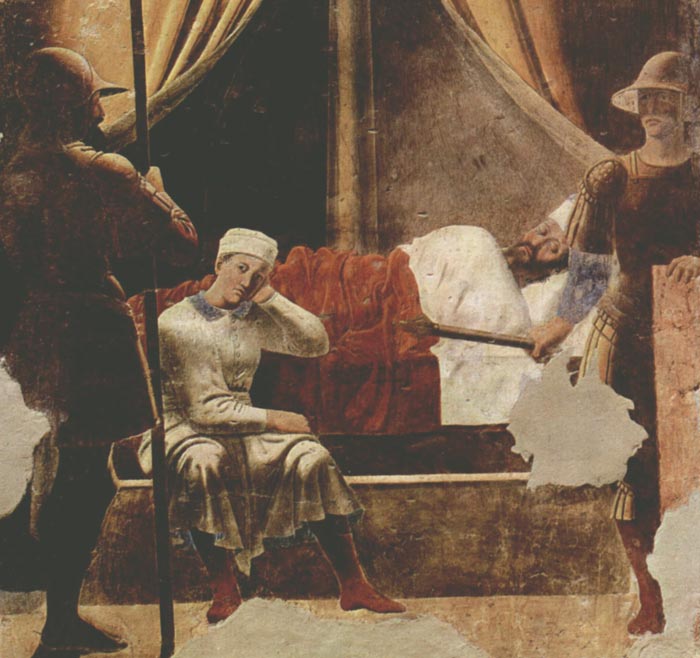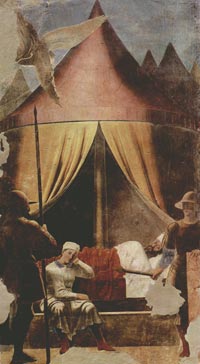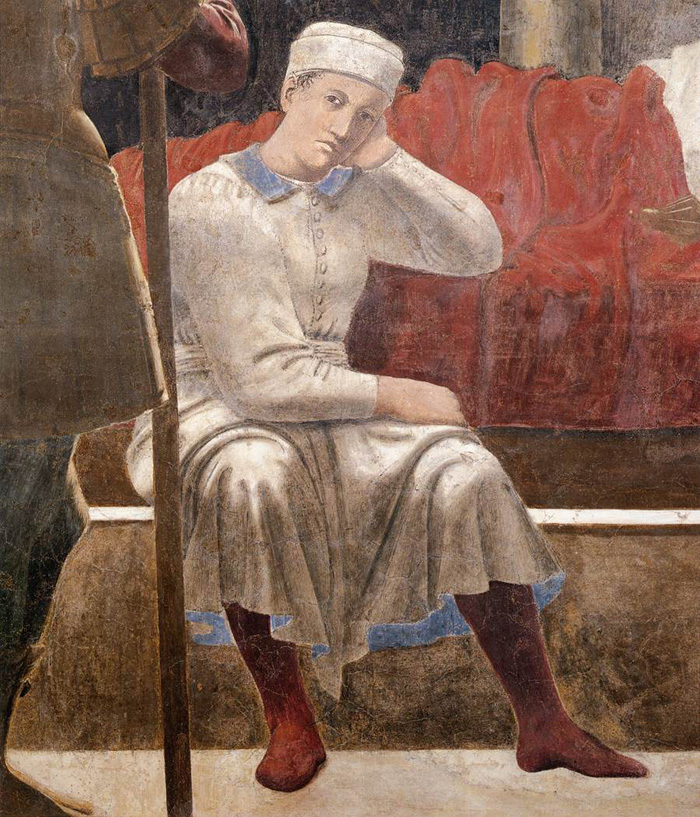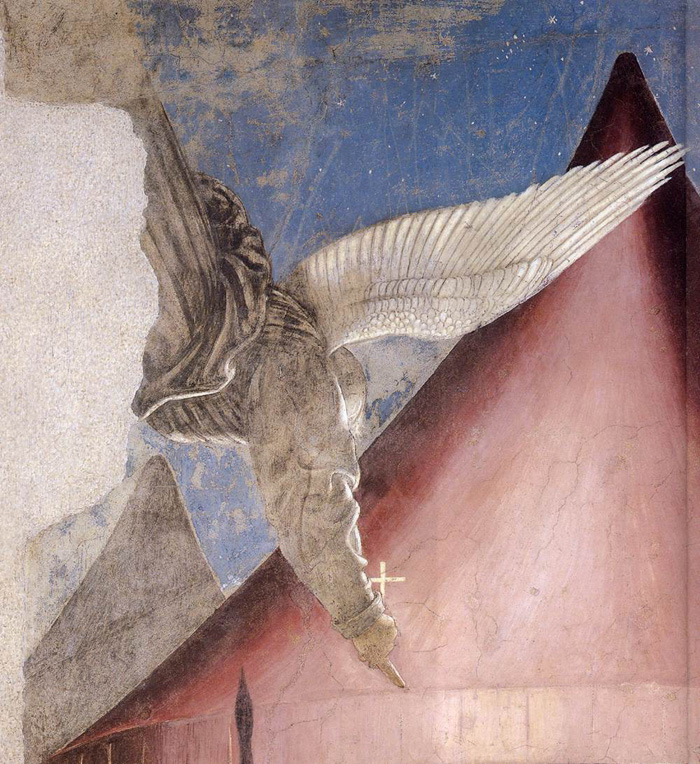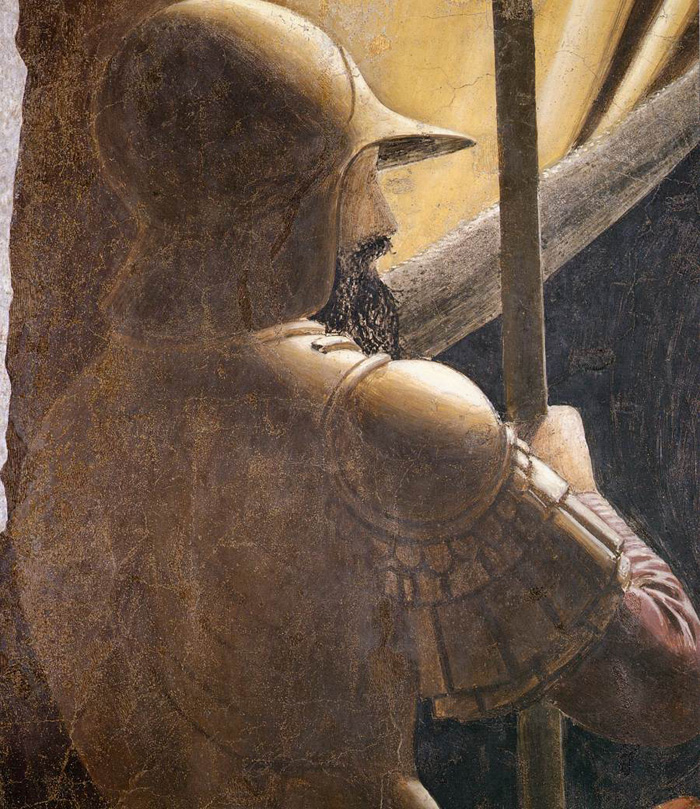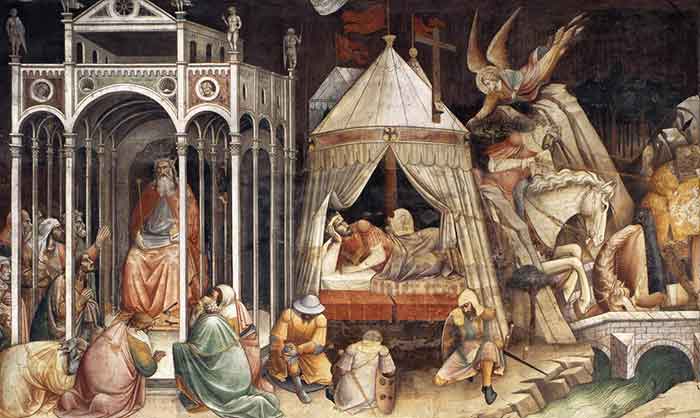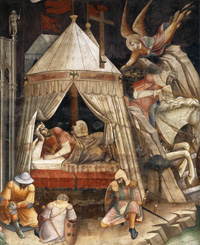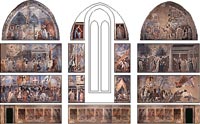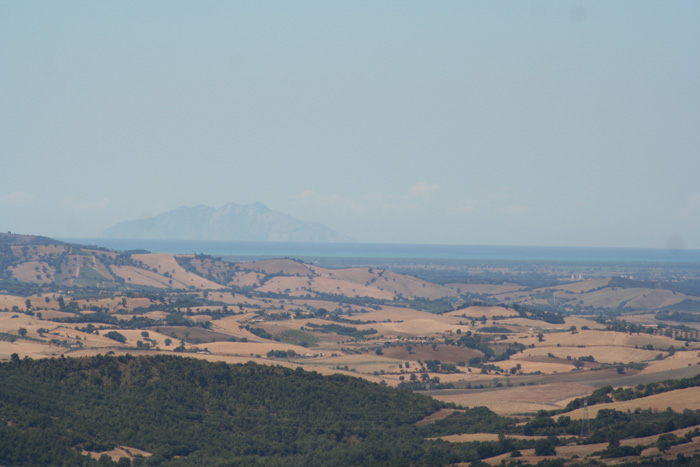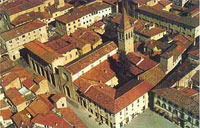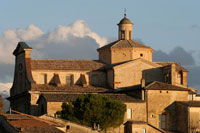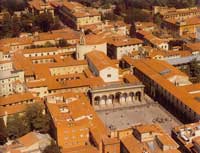Lyrics to "Constantine's Dream" song by Patti Smith
I dreamed a dream of St. Francis who kneeled and prayed
For the birds and the beasts and all human kind
All through the night I felt drawn in by him
And I heard him call like a distant hymn
I retreated from the silence of my room
Stepping down the ancient stones washed with dawn
And entered the basilica that bore his name
Seeing his effigy I bowed my head
And my racing heart, I gave to him
I kneeled and prayed and sleep
That I could not find in the night
I found through him
I saw before me the world of his world
The bright fields, the birds in abundance
All of nature of which he sang singing of him
All the beauty that surrounded him as he walked
His nature that was nature itself and I heard him
I heard him speak and the birds sang sweetly
And the wolves licked his feet
But I could not give myself to him
I felt another call from the basilica itself
The call of art, the call of man
And the beauty of the material drew me away
And I awoke and beheld upon the wall
The dream of Constantine
The handiwork of Piero della Francesca
Who had stood where I stood
And with his brush stroke
The legend of the true cross
And he envisioned Constantine
Advancing to greet the enemy
And as he was passing the river
An unaccustomed fear gripped his bowels
An anticipation so overwhelming
That it manifested in waves
All through the night the dream drew toward him
As an advancing crusade
He slept in his tent on the battlefield
While his men stood guard
And an angel awoke him
Constantine within his dream awoke
And his men saw a light pass over the face
Of the king, the troubled king
And the angel came and showed to him
The sign of the true cross in heaven
And upon it was written
"In this sign shall thou conquer"
In the distance, the tents of his army were lit by moonlight
But another kind of radiance lit the face of Constantine
And in the morning light the artist seeing his work was done
Saw it was good in this sign shall thou conquer
He let his brush drop and passed into a sleep of his own
And he dreamed of Constantine
Carrying him into battle in his right hand
An immaculate undefiled and simple white cross
Piero della Francesca, as his brush stroked the wall
Filled with the torpor and fell into a dream of his own
From the geometry of his heart, he mapped it out
He saw the king rise, fitted with armor set upon a white horse
An immaculate cross in his right hand
He advanced toward the enemy and the symmetry
The perfection of his mathematics
Caused the scattering of the enemy agitated, broken
They fled and Piero dela Francesca, waking, cried out
All is art, all is future, oh Lord, let me die on the back of adventure
With a brush and an eye full of light
As he advanced in age the light was shorn from him
His eyes, blinded, he layed upon his bed
On an october morning, 1492 whispering
Oh Lord, let me die on the back of adventure
Oh Lord, let me die on the back of adventure, oh
And a world away, the world away
On three great ships, adventure itself as if to answer
Pulling into the new world
And as far as his eyes could see, no longer blind
All of nature, unspoiled, beautiful, beautiful
Such a manner it would have lifted
The heart of St. Francis into the realm of universal love
Columbus set foot on the new world
He witnessed beauty unspoiled
All of the delights given by God as if in Eden itself
As if Eden had opened up her heart to him
And opened her dress and all of her fruit, gave to him
And Columbus so overwhelmed
Fell into a sleep of his own
All the world in his sleep, all of the beauty
All of the beauty entwined with the future
The 21st century advancing like the angel
Advancing like the angel
That had come to Constantine
Constantine and history
Oh, this is your cross to bear
Oh Lord, oh Lord, let me deliver
Hallowed adventure
To all mankind in the future
Oh art, cried the painter
Oh art, oh art, cried the angel
Art, the great material gift of man
Art that hath denied the hungered pleas of St. Francis
Oh thou, artist, all shall crumble in the dust
Oh thou, navigator, the terrible end of man
This is your gift to mankind
This is your cross to bear
Then Columbus saw all of nature aflame
The apocalyptic night
And the dream of the troubled king
Dissolved into light
![]()

